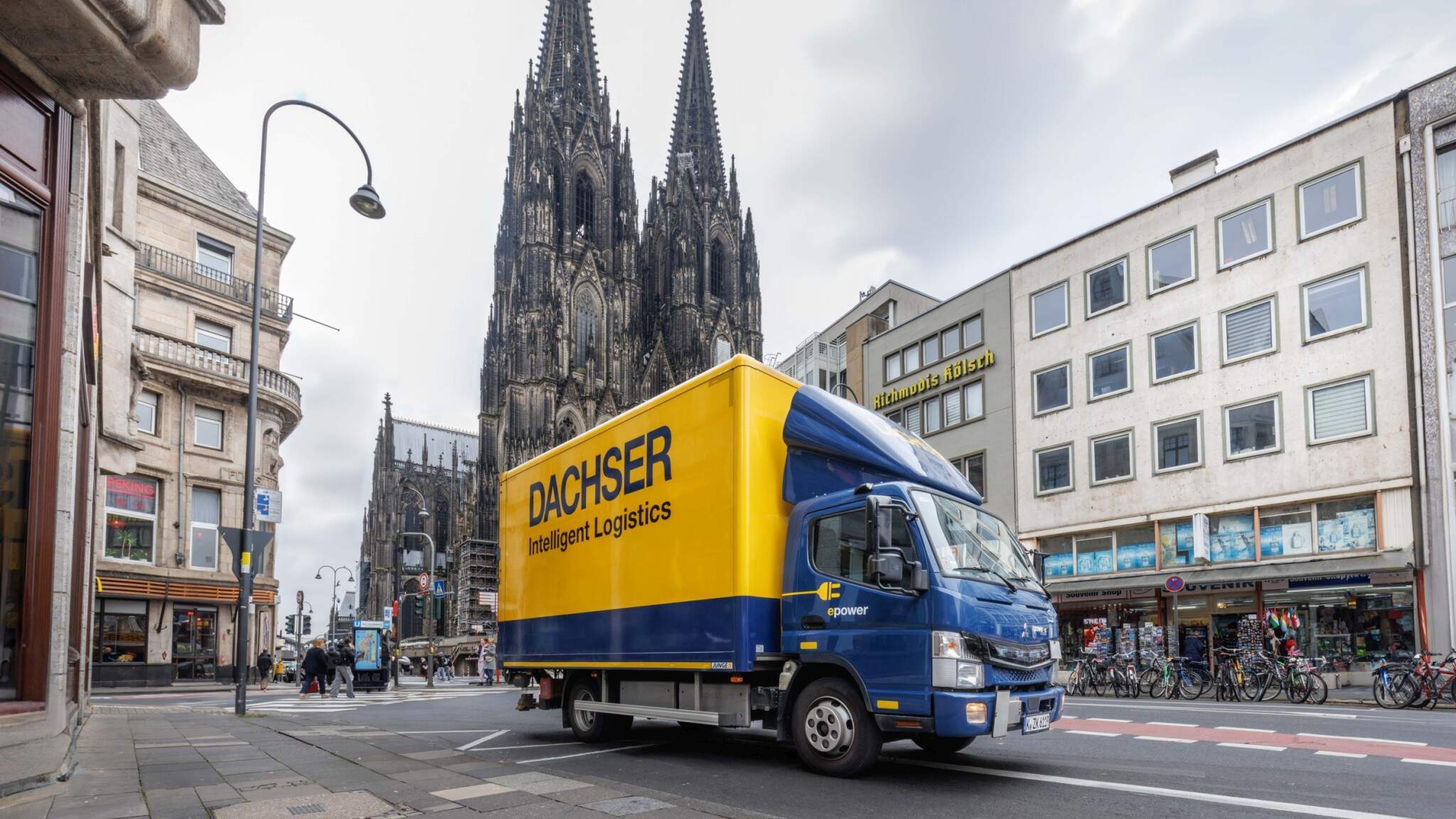More e-trucks for Cologne city center
DACHSER serves eight post codes completely emission-free
DACHSER has set up an emission-free delivery zone in the center of Cologne, Germany, in which the logistics service provider uses only battery-electric vehicles. This applies to all deliveries and pickups of non-refrigerated goods that DACHSER carries out there for its customers.

The DACHSER Emission-Free Delivery zone on the left bank of the Rhine covers the downtown area bounded by the Innere Kanalstrasse, including the historic city center around Cologne Cathedral, the main train station, Altstadt Süd, Zülpicher Strasse, Aachener Weiher, Alter Markt, Heumarkt, and Neumarkt, plus the shopping streets Breite Strasse, Hohe Strasse, and Schildergasse.
Two FUSO eCanter electric trucks, each with a gross vehicle weight of 7.49 metric tons and space for eleven standard pallets, as well as a Renault Master E-Tech Electric weighing 3.5 metric tons and with five pallet spaces, travel for DACHSER in the city without producing any local greenhouse gases. The smaller Renault van is particularly suitable for the narrow streets of Cologne’s old town. When they need recharging, the three vehicles return to the DACHSER branch in Cologne-Gremberghoven to fill up on green electricity.
The launch of DACHSER Emission-Free Delivery here in Cologne is an important milestone in gaining experience with alternative powertrains and preparing ourselves for possible entry bans on vehicles with combustion engines. The three zero-emission vehicles are clean and quiet on the streets downtown, some of which are quite narrow. Our customers really appreciate that.
Alexander Haak, General Manager European Logistics, DACHSER logistics center CologneDACHSER tested a cargo bike for deliveries in the Cologne city center back in 2019, and launched operation of the first two e-trucks in 2022. With the third zero-emission vehicle, which was added this summer, the company has been able to create a downtown delivery zone in Cologne where battery-electric vehicles are used without exception.
Cologne is now one of 16 European cities in which DACHSER has implemented the DACHSER Emission-Free Delivery concept in everyday logistics operations. The company plans to expand the concept for non-refrigerated groupage to a further eight cities by the end of 2025. Besides Cologne, the other German cities that already have such a zone are Berlin, Dortmund, Freiburg, Hamburg, Munich, and Stuttgart.
Long-term climate protection strategy
By pursuing a long-term climate protection strategy and focusing on efficiency, innovation, and inclusive responsibility, DACHSER is paving the way for sustainable logistics together with its customers and partners. The company began deploying battery-electric vehicles in 2018 and is steadily expanding its fleet of vehicles with alternative powertrain systems in the short- and long-distance segments. More than 90 zero-emission vehicles are now on the road for DACHSER in Europe.
“Road freight transport in the European Union will gradually switch to trucks with emission-free powertrains in the coming years and decades. These will be battery-electric or hydrogen fuel-cell trucks, depending on the use case. As a family-owned company, we see it as part of our responsibility to prepare and actively shape this far-reaching transformation of the transport and logistics sector,” says Alexander Tonn, COO Road Logistics at DACHSER.
DACHSER has had a presence in Cologne for over 70 years. In 2009, the branch moved into its current home in Cologne-Gremberghoven. Covering 102,000 m2 in total, with 330 employees, over 13,000 m2 of handling space, plus office space and several external warehouses, DACHSER Cologne is one of the largest locations in the company’s German network. In addition to transport logistics, the branch also offers warehousing and custom services. Comprehensive contract logistics services and industry-specific solutions round out the company’s range. Every year, 1.2 million shipments are sent from the DACHSER site in Cologne-Gremberghoven to destinations all over Europe. A system and charter transport network connects the branch to 37 countries.